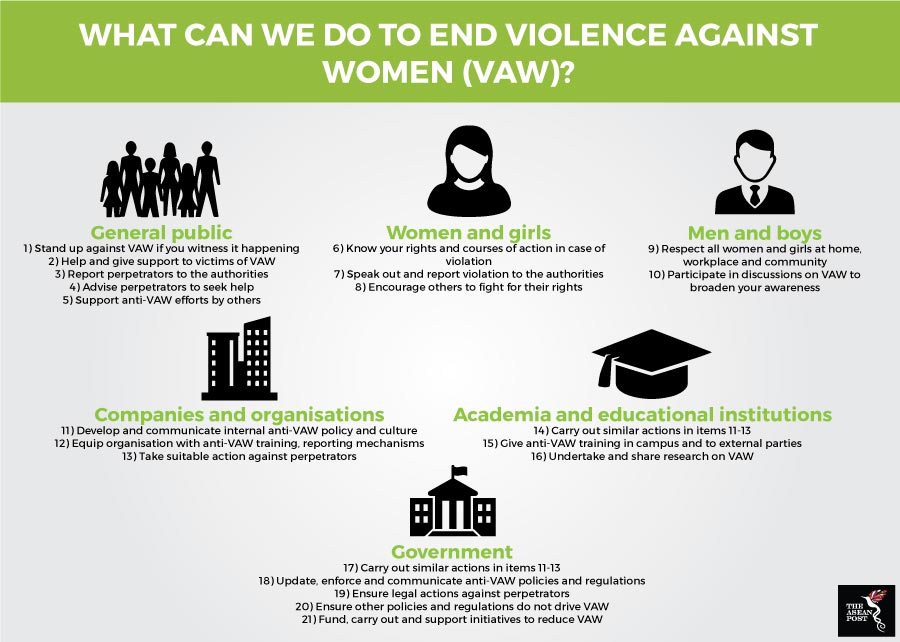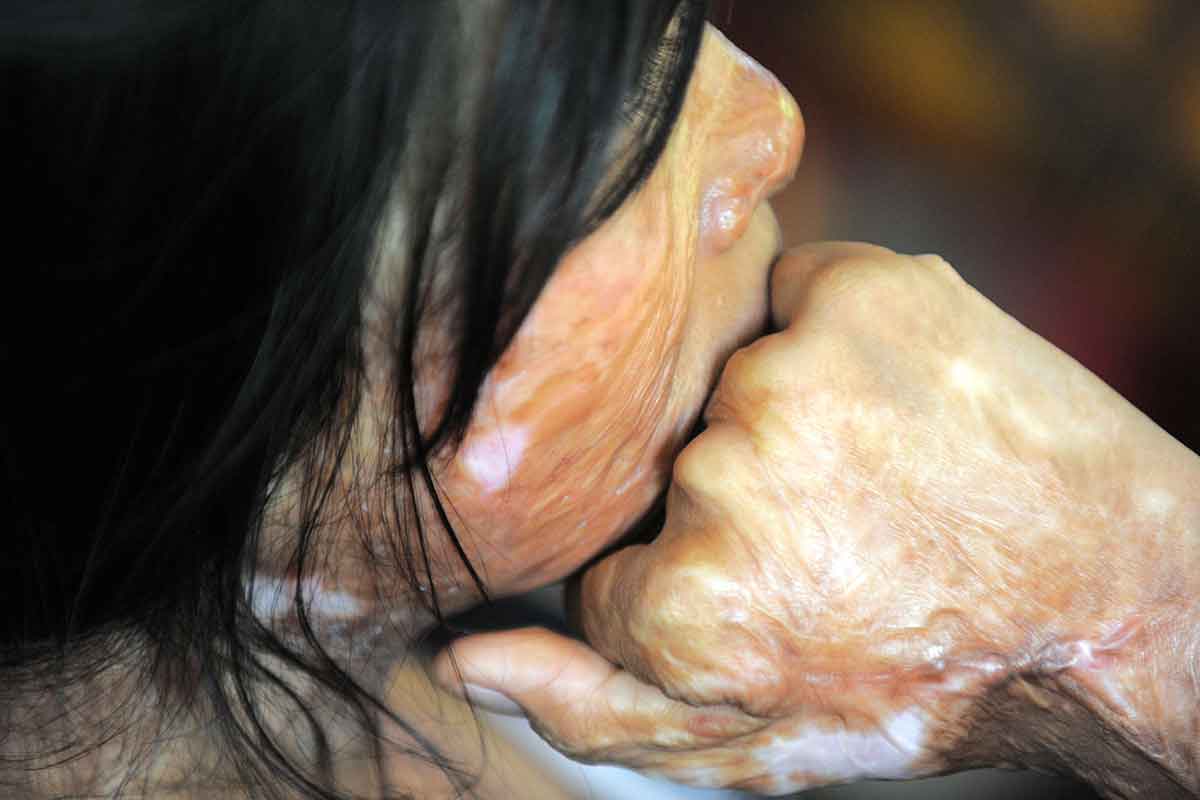Today marks the International Day for the Elimination of Violence Against Women. In the Philippines the days between 25 November and 12 December are observed annually as the 18-Day Campaign to End Violence Against Women (VAW). The tradition that emphasises VAW as a human rights violation has been going on since 1991. During this period, issues surrounding VAW take centre stage in the country at the forefront of gender equality in Southeast Asia.
But even in the Philippines, where performance is better than in most countries globally with 96 women to every 100 men in leadership positions and around 28 percent women representation in parliament, VAW in its society is alarming. According to the 2017 National Demographic and Health Survey (NDHS), around 26 percent of surveyed ever-married Filipino women aged between 15-49 have experienced physical, sexual or emotional violence at the hands of their husbands or partners.
According to the Philippine Commission on Women (PCW), the results of such surveys are more indicative of the prevalence of VAW in the country, compared to administrative data from social and security service providers like the police, social and health workers. This is due to the nature of data gathered that rely solely on reported cases.
“The 2018 18-day campaign to end VAW shall focus on primary prevention to reduce incidents of VAW across the country. This can be achieved by letting people understand VAW from the point of view of victim-survivors. It is hoped that such deeper understanding would ignite compassion from stakeholders, so that they would not commit, condone or remain silent about VAW,” said a statement by PCW.

Source: Various
Global prevalence of VAW
Figures from the United Nations (UN) entity dedicated to gender equality and women empowerment UNWomen, estimates that 35 percent of women worldwide have experienced either physical and/or sexual violence at some point in their lives. Some national studies show that up to 70 percent of women have experienced physical and/or sexual violence from an intimate partner in their lifetime.
Women and girls together account for 71 percent of human trafficking victims globally, with girls representing nearly three quarters of child trafficking victims. Nearly three quarters of trafficked women and girls are trafficked for the purpose of sexual exploitation. Southeast Asian women are especially vulnerable to trafficking for forced marriage, with most human trafficking victims detected between 2012 and 2014 in the region being female children.
Approximately 15 million girls aged between 15 and 19 worldwide have experienced forced sexual intercourse or other sexual acts at some point in their lives, nine million of which were victimised within the past year. Amongst these girls, only one per cent sought professional help. For adult females, less than 40 percent seek help of any sort, mostly from family and friends. Very few of them look to formal institutions and mechanisms, with less than 10 percent appealing to the police.
Twice a victim in conflict areas
Contextual factors such as humanitarian crises like armed conflict and disasters may increase a woman’s vulnerability to violence. This is the case in the Philippine city of Marawi, where a five-month conflict to establish an Islamic State (IS) provincial territory by the Maute-Abu Sayyaf group claimed the lives of 920 militants, 165 government security troops and 47 civilians in 2017.
“Many women and girls here were suffering from violence. And the armed conflict made the situation of gender-based violence even worse. There are a lot of unreported abuses, especially after the Marawi conflict,” explained Umme Limbona, a social worker from Marawi to the UN sexual and reproductive health agency (UNFPA).
An obstetrician/gynaecologist from Marawi, Dr Nadhira Abdulcarim, said that aside from death, sexual and reproductive health consequences like pregnancies, sexually transmitted infections like HIV, as well as mental and psychosocial effects like depression and post-traumatic stress, the challenges to addressing violence against women in Marawi include stigma.
“There is a lot of stigma around sexual violence and abuse. Many do not report it because it is a taboo, and you and your family's reputations suffer,” said Nadhira.
VAW is a severe violation of human rights and a significant concern to public health. It also represents socio-economic costs to a country’s development. While the targets of VAW are women, society as a whole will bear the collateral damage and costs of these heinous actions if we don’t work together to stop it.
Related articles:
The march against child marriage
